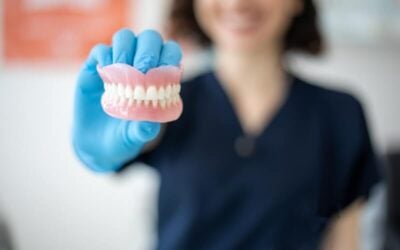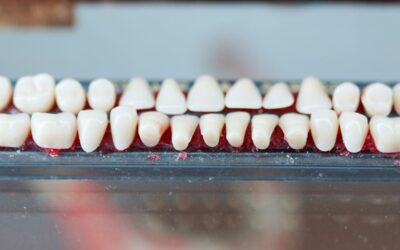Periodontal Analysis Benefits from Artificial Intelligence
Periodontal Analysis Benefits from Artificial Intelligence

Artificial Intelligence (AI) is on everybody’s’ lips. AI, it seems, will be the answer to every question and will, possibly, make every current situation better. Humanity has an abiding love affair with a technology, which is ultimately non-human. Perhaps, it speaks of our existential loneliness within the galactic cosmos? Of course, we have created AI and the knowledge embedded in these programs comes from our own very biased canons. Therefore, the outcomes from AI should not come as any great surprise. The hope, I suppose, is that AI will use its information sources to come up with faster and more exacting solutions. Periodontal analysis benefits from Artificial Intelligence (AI) is an example where this may prove to be so.
What Is Periodontal Analysis Via AI?
One definition is:
“Artificial intelligence (AI) is the development of computer systems whereby machines can mimic human actions. This is increasingly used as an assistive tool to help clinicians diagnose and treat diseases. Periodontitis is one of the most common diseases worldwide, causing the destruction and loss of the supporting tissues of the teeth. Periodontitis is the sixth most prevalent disease worldwide. It is characterised by microbially associated, host-mediated inflammation that results in loss of alveolar bone and periodontal attachment, which can lead to tooth loss. This disease has a well-reported but complex relationship with a number of other physiological systems leading to detrimental effects on quality of life and general health. Further to this, a bi-directional relationship between systemic conditions, including chronic inflammatory disease such as diabetes and atherosclerosis, has been shown. Periodontitis is also challenging for clinicians to accurately recognise and diagnose]. Best practice currently focuses on measuring soft tissues with a graduated probe and assessing hard tissues with radiographic imaging. However, these methods have poor inter- and intra-operator reliability due to variations in probing pressure and radiographic angulation.”
– NCBI
To interpret the salient message in the above quote from a research study into this I will draw your attention to the last couple of sentences. A radiograph is an X-Ray. You know that moment at the dentists when everyone but you runs out of the room due to the fear of exposure to radiation. Meanwhile, you are prostrate in the treatment couch with your mouth wide open. Most visits to the dentist involve an X-Ray, so that the dentist can examine in detail what is happening inside your mouth and beneath the surface of your teeth and gums. However, there can be issues with this process, causing assessment failures. AI can come to the fore here and use its superior analytical processes to read X-Rays. Radiography is an existing technology and if AI can productively improve the use of this technology by more accurate analysis for conditions like Periodontitis it will be a good thing for all.
Faster & More Accurate Dental Analysis By AI
Faster and more accurate analysis of X-Rays by AI will mean better dental care. It should, also, speed up the average length of check-ups and dental treatments. Ultimately, this may, once the cost of the AI technology has been absorbed, result in more cost effective dental care. Periodontitis is, according to the information provided by the study quoted above, the sixth most prevalent disease in the world. It is linked to diabetes and other inflammatory conditions, which are endemic in Australia and globally. If AI can improve accurate diagnosis of this scourge it will contribute directly to improving health outcomes for Australians. I do think that AI has a very real and valuable role to play in healthcare in the twenty first century. Star Trek solutions are just about here and the enhancements to our already top shelf dental health care in this country will be very welcome.

Drilling Down Into Periodontitis Radiograph Analysis by AI
In a study at the Department of Diagnostics, University of Medical Sciences, Poznan, Poland a score of X-Rays were analysed by both AI and oral and maxillofacial radiology experts.
“A tooth was considered unhealthy when periapical periodontitis related to this tooth had been detected on the radiograph. At the same time, a tooth was classified as healthy when no periapical radiolucency was detected on the periapical radiographs. Then, the same radiographs were evaluated by artificial intelligence, Diagnocat (Diagnocat Ltd., San Francisco, CA, USA). Diagnocat (Diagnocat Ltd., San Francisco, CA, USA) correctly identified periapical lesions on periapical radiographs with a sensitivity of 92.30% and identified healthy teeth with a specificity of 97.87%. The recorded accuracy and F1 score were 96.66% and 0.92, respectively. The artificial intelligence algorithm misdiagnosed one unhealthy tooth (false negative) and over-diagnosed one healthy tooth (false positive) compared to the ground-truth results.”
– Issa J, Jaber M, Rifai I, Mozdziak P, Kempisty B, Dyszkiewicz-Konwińska M. Diagnostic Test Accuracy of Artificial Intelligence in Detecting Periapical Periodontitis on Two-Dimensional Radiographs: A Retrospective Study and Literature Review. Medicina. 2023; 59(4):768. https://doi.org/10.3390/medicina59040768
The results of this small study were highly encouraging in terms of speed and accuracy delivered by the AI employed in the analysis. Will it have dentists quaking in their boots? Will the introduction of AI into the analysis of X-Rays erode the role of human dentists? Many commentators are warning that AI poses the single greatest danger to humanity ever faced before. Will we become the inventors of our own demise? Dr Geoffrey Hinton, the so-called Godfather of AI, has quit Google warning of the dangers of AI. Even a prominent corporate leader like Elon Musk has called for a temporary halt to the introduction of artificial intelligence.
“Key figures in artificial intelligence want training of powerful AI systems to be suspended amid fears of a threat to humanity. They have signed an open letter warning of potential risks, and say the race to develop AI systems is out of control. Twitter chief Elon Musk is among those who want training of AIs above a certain capacity to be halted for at least six months. Apple co-founder Steve Wozniak and some researchers at DeepMind also signed.”
– BBC
Is this genuine or merely corporate leaders playing for time, so that their organisations can catch up. In tech the market moves with astonishing speed and powerhouses one day can become obsolete the next. Think of Nokia and Blackberry. Think of Sanyo and Compaq.
Is AI The Future For Dentists?
AI will be taking the jobs of many middle managers and those involved in monitoring and analytic roles. Data crunching by AI will take over from humans in multiple industries in a very short time. Dentists will be safe for as long as robotics lag behind in the affordable performance of fine motor skills. The oral cavity is a very sensitive workplace and dentistry by robots with AI is still a long way off, I suspect. The troubles with self-driving vehicles indicates that this area is still in the early stages of troubleshooting. However, greater introduction of AI into various components of dentistry will accelerate rapidly, I confidently predict. Periodontal analysis benefits from Artificial Intelligence (AI) are just the beginning in a new and exciting future for dental care.
The conclusions garnered by research studies into the evaluation of AI as a supplemental tool for dentists are very positive in general. The consensus is that new technology is adopted rapidly by the field of dentistry. The high accuracy in analysis of radiography via AI is a definite plus. The speed delivered by machine learning AI is another positive. It will allow dentists to focus on carrying out treatments and providing world class care to their patients. ChatGPT4 is not quite ready for root canal surgery just yet, however.
Note: All content and media on the Bacchus Marsh Dental House website and social media channels are created and published online for informational purposes only. It is not intended to be a substitute for professional medical advice and should not be relied on as health or personal advice.
Services we mentioned:
Related Articles
The ADA Pushes For Better Oral Care
Dr Stephen Liew, the Australian Dental Association (ADA) president is coming out firing in the push for better oral care for Australians…
In 2024: What Your Dentist Would Really Like You To Do Differently
Happy New Year Everyone! May you make 2024 your happiest dental year ever. Here’s what your dentist would like you to do differently…
Foods And Supplements That Help Slow or Prevent Gum Disease
Are there really foods and supplements that help slow or prevent gum disease? Dentists will point toward those foods to be avoided…
Something Stuck In Your Teeth? It’s The Past And The Future
The porosity of teeth and bones holds blood, sweat and tears and they’re the kind of stories we like to hear about ourselves ... Were you ever lucky enough to have simultaneously channelled Henry Steele Commager through a jangle of accidents, blunders, surprises and...
















